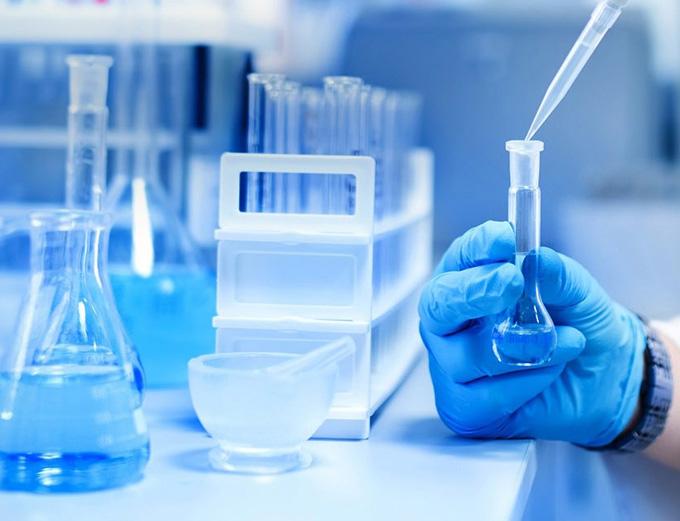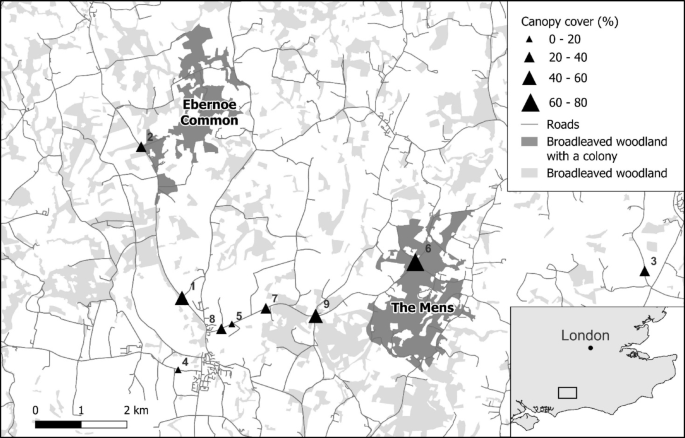Report on the Global Biological and Chemical Indicators Market and its Alignment with Sustainable Development Goals
Market Overview and Contribution to Global Health
The Biological and Chemical Indicators Market is demonstrating sustained growth, driven by a global imperative to enhance safety, quality, and regulatory compliance across critical industries. These indicators are fundamental to validating sterilization and contamination control processes, directly supporting the achievement of Sustainable Development Goal 3 (Good Health and Well-being). By ensuring the efficacy of sterilization in healthcare, pharmaceutical, and food production settings, the market plays a vital role in preventing infections, safeguarding public health, and ensuring the safety of medical and food products. The increasing adoption of these indicators in hospitals and clinics is a direct response to the global need for robust infection prevention and control, a key target under SDG 3.
The market’s scope extends beyond healthcare, contributing to other SDGs. Applications in water testing and environmental assessments align with SDG 6 (Clean Water and Sanitation), while ensuring food safety supports SDG 2 (Zero Hunger). As a cornerstone of quality assurance, the market underpins resilient infrastructure and promotes inclusive and sustainable industrialization, in line with SDG 9 (Industry, Innovation, and Infrastructure).
Market Analysis and Projections
Market Size and Demand
The Biological and Chemical Indicators Market is projected to grow from $1.1 billion in 2024 to $2.3 billion by 2034, with a Compound Annual Growth Rate (CAGR) of approximately 7.7%. This expansion is fueled by the increasing number of healthcare facilities and stringent regulatory frameworks, which reflect a global commitment to the targets of SDG 3. Investment in sterilization validation processes by hospitals and pharmaceutical companies is essential for meeting international quality standards and ensuring patient safety.
- Biological Indicators Segment: This segment leads the market, providing critical validation for sterilization processes. Its dominance underscores the industry’s commitment to the highest standards of health and safety.
- Chemical Indicators Segment: This segment is experiencing rapid growth due to its cost-effectiveness and ease of use, making essential safety monitoring more accessible globally and contributing to equitable health outcomes.
Market Dynamics and Sustainable Innovation
The market’s growth is propelled by factors that are intrinsically linked to sustainable development.
- Technological Advancement: Innovations in rapid-response and highly sensitive indicators support SDG 9 by fostering industrial innovation and upgrading technological capabilities in the health sector.
- Regulatory Compliance: The implementation of stringent standards by global bodies like the World Health Organization (WHO) reinforces the framework for achieving SDG 3, driving demand for reliable monitoring solutions.
- Sustainable Production: The market is increasingly focused on innovation in sustainable and eco-friendly indicator materials. This shift directly addresses SDG 12 (Responsible Consumption and Production) by reducing the environmental impact of safety processes and promoting a circular economy.
While challenges such as raw material costs and supply chain complexities exist, the industry’s pivot towards automation and sustainable practices presents significant opportunities for growth aligned with global sustainability targets.
Competitive and Regional Landscape
Key Industry Players
The market is shaped by several key global corporations committed to innovation and quality. Their efforts in developing advanced monitoring solutions contribute significantly to global health infrastructure.
- Merck Millipore
- Thermo Fisher Scientific
- Bio-Rad Laboratories
- Perkin Elmer
- Agilent Technologies
- Waters Corporation
- Beckman Coulter
- Shimadzu Corporation
- Bruker Corporation
- Sartorius AG
- Eppendorf AG
- QIAGEN
- Illumina
- Roche Diagnostics
- GE Healthcare
- Oxford Instruments
- Tecan Group
- Horiba
- Analytik Jena
- Mettler Toledo
Regional Analysis and SDG Implementation
The market’s regional distribution highlights varying stages of progress toward health and industrial SDGs.
- North America and Europe: These regions dominate the market due to advanced healthcare infrastructure and stringent regulatory environments, reflecting a high level of commitment to SDG 3 and SDG 9.
- Asia-Pacific: This region represents the fastest-growing market. Increased healthcare expenditure and expanding manufacturing capabilities in countries like China and India signify a major push to advance regional health outcomes and build resilient industrial infrastructure.
- Latin America and Middle East & Africa: These regions are progressively adopting advanced sterilization monitoring systems as part of broader healthcare modernization efforts, indicating growing alignment with global health and safety standards.
Market Segmentation and Future Outlook
Market Segmentation
The market is segmented across various categories, reflecting its wide-ranging impact on health and industry.
- Type: Biological Indicators, Chemical Indicators
- Product: Self-Contained Biological Indicators, Spore Strips, Chemical Indicator Strips, Integrators, Emulators
- Application: Healthcare, Pharmaceutical, Food & Beverage, Cosmetics
- End User: Hospitals, Pharmaceutical Companies, Food Processing Units, Cosmetic Manufacturers
Future Outlook and Commitment to Sustainability
The 2024-2034 outlook for the Biological and Chemical Indicators Market is positive, with growth underpinned by an unwavering global focus on health, safety, and quality. The industry’s trajectory is increasingly shaped by digitalization and sustainability. The development of smart indicators with digital tracking enhances traceability and efficiency, supporting robust health systems (SDG 3). Furthermore, increased investment in environmentally friendly materials and reduced-waste packaging demonstrates a clear industry commitment to SDG 12. The market is poised to remain a critical enabler of safety and compliance, contributing directly to a healthier and more sustainable future.
Analysis of Sustainable Development Goals in the Article
1. Which SDGs are addressed or connected to the issues highlighted in the article?
The article on the Biological and Chemical Indicators Market connects to several Sustainable Development Goals (SDGs) by highlighting technologies and practices crucial for public health, environmental safety, and industrial innovation.
- SDG 3: Good Health and Well-being: The article’s primary focus is on tools that ensure safety and quality in healthcare. It emphasizes “infection prevention, particularly in hospitals and clinics,” and the role of indicators in monitoring “sterilization and contamination control processes across healthcare, pharmaceuticals.” This directly supports the goal of ensuring healthy lives and promoting well-being.
- SDG 6: Clean Water and Sanitation: The article mentions that beyond healthcare, these indicators are used in “water testing.” This application is fundamental to monitoring water quality and ensuring it is safe for consumption and use, which is a core component of SDG 6.
- SDG 9: Industry, Innovation, and Infrastructure: The market’s growth is driven by “technological advancements” and “innovation.” The article discusses the development of “highly sensitive and rapid-response indicators,” “smart indicators with digital tracking,” and investments in “R&D and localized production.” This aligns with SDG 9’s aim to build resilient infrastructure, promote inclusive and sustainable industrialization, and foster innovation.
- SDG 12: Responsible Consumption and Production: The article addresses the need for industries to “meet stringent standards” for “industrial and environmental conditions.” It also highlights a move towards sustainability with “innovation in sustainable and eco-friendly indicator materials” and “reduced waste packaging,” which are central to the principles of responsible production and consumption patterns.
2. What specific targets under those SDGs can be identified based on the article’s content?
Based on the article’s discussion of the applications and development of biological and chemical indicators, several specific SDG targets can be identified.
-
Target 3.d: Strengthen the capacity of all countries, in particular developing countries, for early warning, risk reduction and management of national and global health risks.
The article supports this target by describing how indicators are essential for “infection prevention” and “sterilization assurance” in healthcare settings. By validating sterilization processes, these tools help manage the risk of hospital-acquired infections, a significant global health risk. -
Target 6.3: By 2030, improve water quality by reducing pollution, eliminating dumping and minimizing release of hazardous chemicals and materials…
The use of chemical indicators for “water testing,” as mentioned in the article, directly contributes to this target. These tools help monitor and control contamination, ensuring that water meets safety standards and pollution is minimized. -
Target 9.5: Enhance scientific research, upgrade the technological capabilities of industrial sectors in all countries… encouraging innovation…
The article highlights that “technological progress has led to the development of highly sensitive and rapid-response indicators” and that companies are “focusing on product innovation, digital monitoring solutions.” The significant market growth and investment in R&D in regions like Asia-Pacific further underscore the upgrading of technological capabilities in this industrial sector. -
Target 12.4: By 2020, achieve the environmentally sound management of chemicals and all wastes throughout their life cycle… and significantly reduce their release to air, water and soil in order to minimize their adverse impacts on human health and the environment.
The core function of the indicators discussed is “contamination control” and ensuring industrial processes meet “stringent standards.” Furthermore, the article points to an “industry’s move toward sustainable practices,” including the development of “environmentally friendly indicator materials,” which directly relates to the sound management of chemical products. -
Target 12.5: By 2030, substantially reduce waste generation through prevention, reduction, recycling and reuse.
The article explicitly mentions that “increased investment in environmentally friendly indicator materials and reduced waste packaging reflects the industry’s move toward sustainable practices.” This directly addresses the goal of reducing waste generation.
3. Are there any indicators mentioned or implied in the article that can be used to measure progress towards the identified targets?
The article, being a market analysis, does not cite official SDG indicators but implies several metrics that can be used to measure progress towards the identified targets.
- For Target 3.d: An implied indicator is the adoption rate of biological and chemical indicators in healthcare facilities. The article notes a “growing emphasis on infection prevention” and that the “rising number of healthcare facilities” are “investing in sterilization validation processes,” suggesting that tracking this investment and adoption is a measure of strengthened health risk management.
- For Target 6.3: The scope and application of indicators in water quality monitoring is an implied indicator. The expansion of the market to include “water testing” suggests that progress can be measured by how widely these technologies are deployed for environmental safety.
- For Target 9.5: The article provides direct and indirect indicators, including the market’s compound annual growth rate (CAGR) of approximately 7.7% and the projected market size increase from “$1.1 billion in 2024 to $2.3 billion by 2034.” Additionally, progress can be measured by the level of investment in R&D and the introduction of innovations like “smart indicators with digital tracking and automated result logging.”
- For Targets 12.4 and 12.5: An implied indicator is the market share and development of sustainable products. The article points to “innovation in sustainable and eco-friendly indicator materials” and “reduced waste packaging” as key trends. Measuring the growth of this market segment would indicate progress toward more responsible production.
4. SDGs, Targets, and Indicators Table
| SDGs | Targets | Indicators (Implied from the Article) |
|---|---|---|
| SDG 3: Good Health and Well-being | Target 3.d: Strengthen capacity for early warning, risk reduction, and management of health risks. | The adoption rate and investment in sterilization validation processes (using biological/chemical indicators) in healthcare facilities. |
| SDG 6: Clean Water and Sanitation | Target 6.3: Improve water quality by reducing pollution and minimizing the release of hazardous chemicals. | The scope and frequency of use of chemical indicators for “water testing” to monitor and control contamination. |
| SDG 9: Industry, Innovation, and Infrastructure | Target 9.5: Enhance scientific research and upgrade technological capabilities of industrial sectors. | Market growth rate (CAGR of 7.7%); investment in R&D; development and adoption of new technologies like “smart indicators with digital tracking.” |
| SDG 12: Responsible Consumption and Production | Target 12.4: Achieve environmentally sound management of chemicals and wastes.
Target 12.5: Substantially reduce waste generation. |
Market share and investment in “sustainable and eco-friendly indicator materials”; evidence of “reduced waste packaging” by manufacturers in the sector. |
Source: openpr.com







